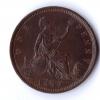|
|
The current range of books. Click the image above to see them on Amazon (printed and Kindle format). More info on coinpublications.com |
|
|
-
Content Count
1,783 -
Joined
-
Last visited
-
Days Won
99
Content Type
Profiles
Forums
Calendar
Downloads
Store
Gallery
Everything posted by jelida
-
And look at his recent feedback. Jerry
-
Here. https://www.rpcoins.co.uk
-

Interesting Elizabeth I Fake Shilling!
jelida replied to Coinery's topic in British Coin Related Discussions & Enquiries
Well they have agreed to pull it now, having been shown this thread. Polite reply, but no further explanation. My correspondence was with their London office - 'incorporating Seaby Coins', but the auction and I presume cataloguing is in the USA - though I agree it should be obvious, unless of course they have the original from which the fakes were copied....nah!. 😁 Jerry -
It wasn’t a slender 3, despite Bruce’s insistence, but a better than most open 3, so I decided to keep it. I took Gouby’s page on the types of 3 to give him at the Midland fair, but he wasn’t there last time. I find that Bruce is a little erratic on grading and varieties, and I hadn’t expected the real thing so wasn’t too disappointed! It’s a shame he seems unable /unwilling to send photos. It must be a month since I received his catalogue with this in, the delay makes it pretty pointless advertising in the magazine. Jerry
-

I love Venn diagrams!!
jelida replied to blakeyboy's topic in Nothing whatsoever to do with coins area!
But according to the diagram above - information sourced by politico from the EU - Turkey is already an ‘EU candidate’ ! Though I agree they shouldn’t be. Jerry. -
-
F111, 2/1. Its a very pretty coin. Jerry
-
I agree, and I would bet that it is 2/1 as well, I think the evidence is there. Well, I’ll know in a few days. Provided it’s not a normal 115 I’ll be happy. Jerry
-

Penny Acquisition of the week
jelida replied to Paulus's topic in British Coin Related Discussions & Enquiries
I have already given the details to Michael. Jerry -

Penny Acquisition of the week
jelida replied to Paulus's topic in British Coin Related Discussions & Enquiries
And a cheap $10 wide date 1889. -

Penny Acquisition of the week
jelida replied to Paulus's topic in British Coin Related Discussions & Enquiries
Here is the Stephen Album 'Medusa', really nice with toned lustre peripherally. Expensive I know (over £2900) but a nice clear Gorgon's head. And missed the VAT! Jerry -
Yes, I noted that. But is is F114 or F111? I think there is a gap between the R and the I, though the photo is not great. Jerry
-
Yes, I messaged him earlier. He is going to approach the American auction house that sold him the coin (see the sticker in second pic). Jerry
-
Is this really a modified effigy, despite the slab? Looking at the BM initials, and the colon after BRITT, I have doubts. But apparently a good investment. Jerry https://www.ebay.co.uk/itm/265719087505?hash=item3dde178191:g:HdMAAOSweUFimGwD
-
Soft artists brush, maybe cut to 1cm, and a dip in petrol and gentle scrub gets rid of that gubbins in no time. Might be worth it anyway, the sweat, salts and grease can be a trigger for verdigris. Doesn’t leave a mark, though I usually dab with acetone after, petrol is not pure. Jerry
-
3 over slightly rotated 3, I would say. Jerry
-

The Coinery signature sale auction
jelida replied to 1949threepence's topic in British Coin Related Discussions & Enquiries
Guy is ‘The Coinery’, Stuart is ‘Coinery’. It’s caught me out before now too. Jerry -

1935 UK Farthing conundrum HELP!
jelida replied to Debono's topic in British Coin Related Discussions & Enquiries
As to whether this effect can be created post mint, I think this calls for some practical experimentation. As Blake says, I doubt the effect would be difficult to create. But as to whether it can happen in the strike - well, that would depend on one solid steel die becoming concave, and it’s matching die becoming convex - both significantly so- and without any ‘stretching effect’ on the design, despite the distances around the curved surfaces having become greater. It is a puzzle, and unless a mint can come up with examples of appropriately deformed dies, I an doubtful we will have a definitive answer, just supposition. If I find the opportunity to do some experimentation, I will report back. But even then nothing would be proven with regard to your coin. But I could flatten it for you if needed. 🤭 Jerry -

1935 UK Farthing conundrum HELP!
jelida replied to Debono's topic in British Coin Related Discussions & Enquiries
This topic includes some interesting comments and link. https://www.cointalk.com/threads/concave-convex-20-s-lincoln.273028/ Jerry -

1935 UK Farthing conundrum HELP!
jelida replied to Debono's topic in British Coin Related Discussions & Enquiries
Yes, at least with the solid blocks of steel the Royal Mint historically used as dies, and to the degree shown on your coin. As to why, we shall never know without evidence. But people certainly do strange things to coins, for fun, as test- pieces, to re-purpose, to defraud , as art-work and as puzzles and many others. And the need to restore a coin bent or damaged due to agricultural activity often presents, in practice many detector found coins benefit from careful conservation to be acceptable to collectors. Jerry -

1935 UK Farthing conundrum HELP!
jelida replied to Debono's topic in British Coin Related Discussions & Enquiries
I often use a hardwood punch (piece of dowel) with a hammer to straighten coins I find metal detecting, and use a hardwood block with recesses of various sizes ( drilled using bits from 1/4 inch to 1 inch approx) to accommodate the un-evenness of the coin so I can work on a small area at a time. It is not difficult to imagine that a farthing, placed centrally over a recess so that it is supported by its edges, and then given a sharp tap or two using said punch might end up domed, without sustaining damage. The hardwood punch leaves no mark on my coins, even if annealed. I would say though that it is very difficult to strike a domed coin from flat dies. Jerry -

The Coinery signature sale auction
jelida replied to 1949threepence's topic in British Coin Related Discussions & Enquiries
I bought the 1827 penny in AU55, £1500 hammer. Certainly seems a fair price compared to LCA offerings in an inferior grade. And no evidence of corrosion, rare to see one better. Jerry -
While on the topic of pennies purchased from Australia, I got this one last year, a rather nice F77. I have noted that there appear to be two F77 reverse g dies , with different date spacing, 11 teeth (this coin, and my other) , and 12 teeth as per the pic taken from a LCA example. Jerry
-
Here are up to date pics of the 1877 F90 penny from a 'deceased estate lot' in Sydney, Australia. Not a thing of great beauty, but in fact better than most so far on Richards site (I make it 6th best, probably...) Jerry
-
I have to agree regarding specimen 11, it does not look right for the currently known F90 reverse, though I’m not sure what it is. And if you are talking about the F90 from Australia, it is now conserved and in my cabinet, at last one I can live with. I will post updated photos shortly. And I don’t think the price of the 1847 Medusa is that unreasonable either, a bit over £3k after currency conversion and import vat to the UK, I suspect if slabbed and the variety better known in the US market it would have gone higher. There were at least three bidders involved above £2.5k. Jerry
 Coinpublications.com
Coinpublications.com



